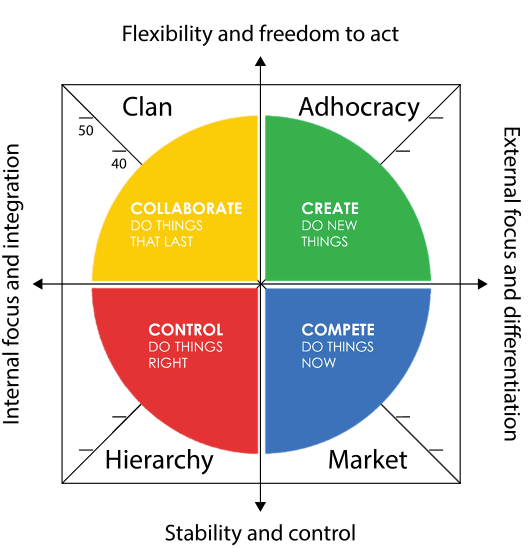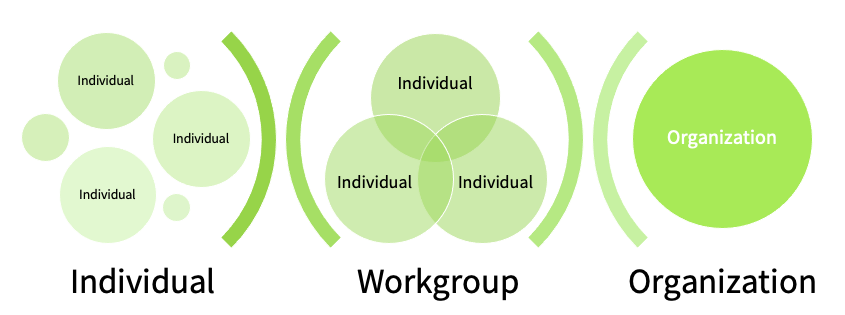The Secret of a Thriving Company Culture
- Dr. Jeff Doolittle

- Jan 13
- 6 min read

Have you ever sat in a meeting and wondered where the discussion was going or what was happening? Maybe the point being made seemed questionable, or the actions of others were divisive. It's frustrating and confusing when values are just words for marketing campaigns and corporate communications. A recent study found that only one in four employees strongly agree that they can apply their company's values daily. You've probably experienced this to some extent before, and maybe now you're in a leadership position. I'll tell you a secret: company values don't have to feel aspirational. Thriving cultures where employees can live out the organization's values are possible. They require an actionable understanding of company culture and the ability of leaders to transform values into daily actions. Here is what you need to know and do to set your company up with a thriving culture.
Why a positive company culture makes a big difference
Your company culture is the one thing that influences every aspect of your business. It directly impacts the overall success of your organization, employees, customers, and communities where you do business. An organization's underlying values influence employees' behaviors and decisions.
Company culture is a shared pattern or system of beliefs, values, and behavioral norms. Stated simply, it's how things get done when no one is watching.
Much has been written on the competitive advantage of a positive company culture. Research has directly linked the effects on financial performance, customer satisfaction, employee teamwork, team cohesion, employee motivation, employee retention, and employee engagement. Your company culture creates an internal and external brand identity that influences people's thoughts about your organization.
A recent human capital trends study by Deloitte suggested that 95% of candidates believe culture is more important than compensation—also, companies with a positive culture experience 8x higher profitability than S&P 400 firms.
No company is looking to stay the same year. As the world changes, people and businesses must change. Organizational culture is critical to innovation. Just as some organizational culture characteristics can support innovation, others can also inhibit innovation.
An actionable measure of company culture
Organizational culture is complex. But, defining the culture in measurable and actionable terms is essential for a thriving company culture. The concept of culture is often considered too abstract to address and is not well understood. A recent study found that only 12% of companies claim to have a program in place to define and improve culture.
The organizational culture assessment instrument (OCAI) based on the Competing Values Framework is an actionable measure of company culture. The survey was adapted from work by Dr. Kim Cameron and Dr. Robert Quinn as part of their Competing Values Framework research at the University of Michigan. The study empirically concluded that a company's focus and flexibility moderate effectiveness.
The Competing Values Framework identifies four fundamentally different cultures.
Clan Culture creates a collaborative atmosphere like a family. This culture emphasizes the value of teamwork, participation, and a consensus decision-making style.
Adhocracy Culture creates an energetic and entrepreneurial atmosphere. This culture stresses the importance of research and continuous improvement.
Market Culture creates a competitive, fast-paced, results-oriented environment. This culture highlights coming in first.
Hierarchy Culture is a top-down, formal, rule-based atmosphere. This culture emphasizes efficient, reliable, and cost-effective performance.

Note: Adapted from Cameron and Quinn (2011).
The framework enhances cultural understanding by simplifying the cultural description to only two fundamental dimensions: flexibility or stability and internal or external focus. The OCAI survey measures six aspects of the current and preferred organizational culture:
Dominant characteristics describe the overall organization.
Leadership style and how leadership competencies align to culture.
Management of employees and the work situation.
Organizational glue that holds everything together.
Strategic emphases are the aspects of culture that guide strategy.
Criteria for success determine the outcomes of an organization's culture.
Instead of requiring companies to choose one ideal culture type, the survey and framework enable leaders to identify a preferred culture that uniquely aligns with current market trends and company strategic objectives.
The survey highlights cultural congruence across teams. Evidence suggests that while cultural congruence is not a determinant of company success, incongruent organizations are much less effective.
Congruence is the degree of alignment between current and preferred cultures along the six aspects of culture assessed.
How to transform company values into company culture
Individual change leads to organizational culture change. Different cultures have different needs for leadership competencies. Leaders should reflect on their leadership style before looking for ways to change the company.
Consider how leadership habits align with your company values and the preferred culture. If you are looking for actionable and individualized feedback to enhance self-awareness of cultural strengths and opportunities, you will love using a 360-degree assessment customized to your needs.
"Success is the sum of small efforts repeated day in and day out." Robert Collier

After leadership has increased self-awareness, apply the following six culture levers to change how employees behave and perceive the company culture.
Cutlure Lever #1: What leaders pay attention to regularly.
One of the most potent tools for leaders to shape culture is what they pay attention to regularly. What leaders choose to measure, reward, and control matters, and the opposite is also true. For example, suppose an organization wants to build an analytical orientation within the culture. In that case, a great starting point is to ask leaders what data they use to make decisions. By asking the question, you reinforce the importance of data-driven decision-making.
Culture Lever #2: How leaders react to critical incidents.
Much can be revealed when a business or a leader faces a significant challenge. Mike Tyson said, "Everyone has a plan 'til they get punched in the face." These crucible moments in business are like a refining fire. It is the heightened emotional intensity that increases individual and organizational learning. For example, the recent global pandemic revealed much more about an organization's values than any about page on a website or company orientation ever would. Sodexo is one positive example of an organization that has demonstrated its commitment to employees even during a pandemic.
Culture Lever #3: How leaders allocate resources and control costs.
Budgets reveal a lot about the organization's assumptions and beliefs. Resources include physical assets such as equipment, tools, and human resources. What gets resourced gets reinforced. Going back to the example of creating an analytical orientation, leaders should consider what tools and resources employees have available for data analytics.
Culture Lever #4: Deliberate role modeling and training.
How leaders act and behave outside of training is more significant than what is said or demonstrated within leadership development events. Leaders looking to build an analytical cultural orientation would benefit by explaining to and showing the organization how they use data to make decisions on a routine basis.
Culture Lever #5: How leaders allocate rewards.
Rewards and recognition come in many different forms. Also, what is considered a reward varies from person to person. What gets rewarded, how it gets rewarded, and what does not reinforce organizational culture. There are tangible rewards and social rewards. Simply saying thank you for presenting a decision using data analytics is a social reward.
Culture Lever #6: How leaders recruit, promote, and excommunicate.
Who gets hired, promoted, and fired, and for what creates and reinforces organizational culture. Talent management decisions can be viewed as a more subtle nuance to culture change because decisions are influenced by explicitly stated criteria and unstated value priorities. A leader looking to influence an analytical cultural orientation would benefit from assessing the skill sets needed within the organization and then hiring based on those skills.

Architecting a thriving company culture is time-consuming, but there is too much riding on it not to do something about it. As you get started, remember that organizations are likely to deny the need for change and become defensive at the suggestion of change. Organizational change creates anxiety for valid reasons.
To overcome the barriers to change, the change leader needs to create a desire to survive and reduce learning anxiety by creating psychological safety. Leaders build psychological safety by demonstrating humility, selfless love, performance-based accountability, and vulnerability and consistently helping followers comprehend and accept the challenge.
A plan on the front end will ensure desired results during execution. Sell the change within the company with a few concrete short stories, representing the best of the new culture and the necessity for change. Ensure a quick win is visible across the company. Be the change and turn your company values into action: Act!
What is the real challenge ahead of you for a thriving company culture?
References
Bersin, J. (2015). Culture: Why it's the hottest topic in business today. Forbes.
Bremer, M. (2019). How culture boosts performance. OCAI online.
Cameron, K. S., & Quinn, R. E. (2011). Diagnosing and changing organizational culture: Based on the competing
Cameron, K., Quinn, R., Degraff, J., & Thakor, A. (2006). Competing values leadership: Creating value in organizations.
Clark. (2020). The 4 stages of psychological safety : defining the path to inclusion and innovation (First edition.). Berrett-Koehler Publishers, Incorporated.
Doolittle, J. (2023). Life-changing leadership habits: 10 proven principles that will elevate people, profit, and purpose. Organizational Talent Consulting.
Dvorak, N., & Nelson, B. (2016). Few employees believe in their company's values. Gallup Business Journal.
Flamholtz, E. (2001). Corporate culture and the bottom line. European Management Journal. Vol. 19 (3). 268-275.
Schein, E. H., & Schein, P. (2016). Organizational culture and leadership, 5th edition (5th ed.)









Comments